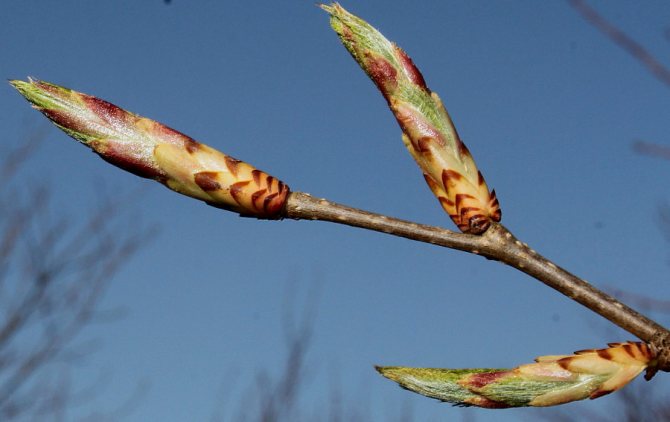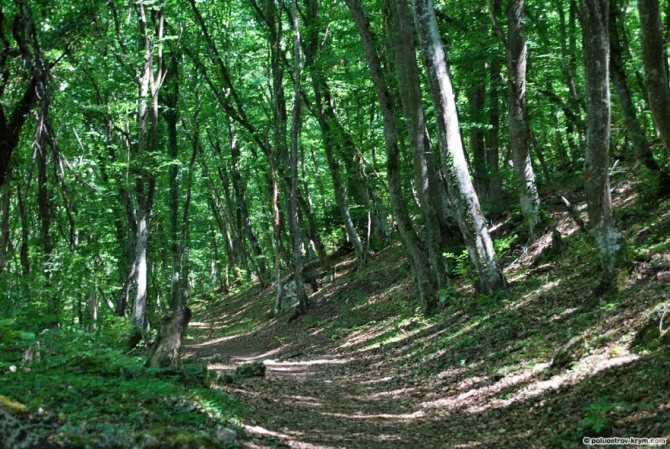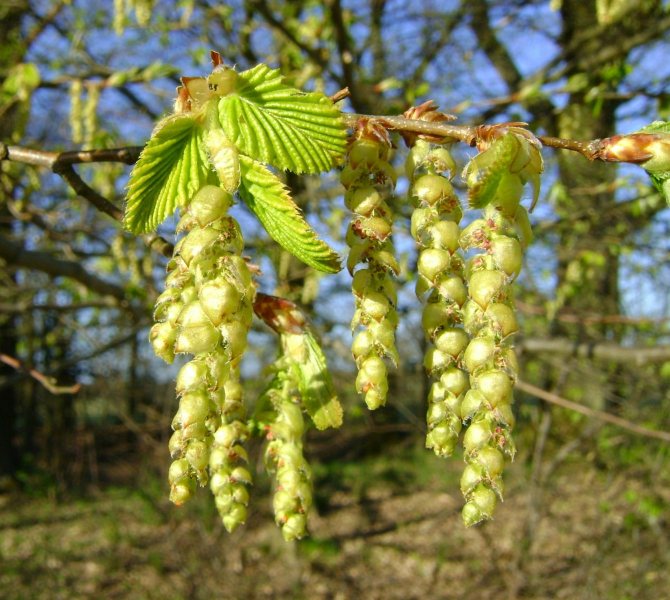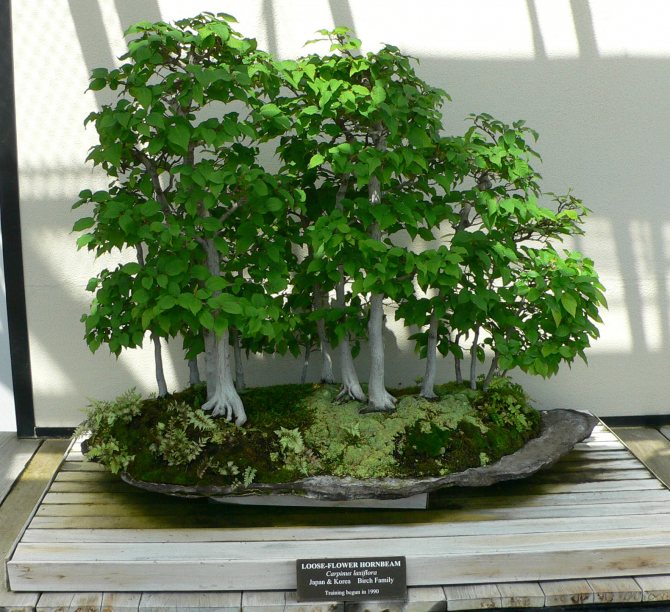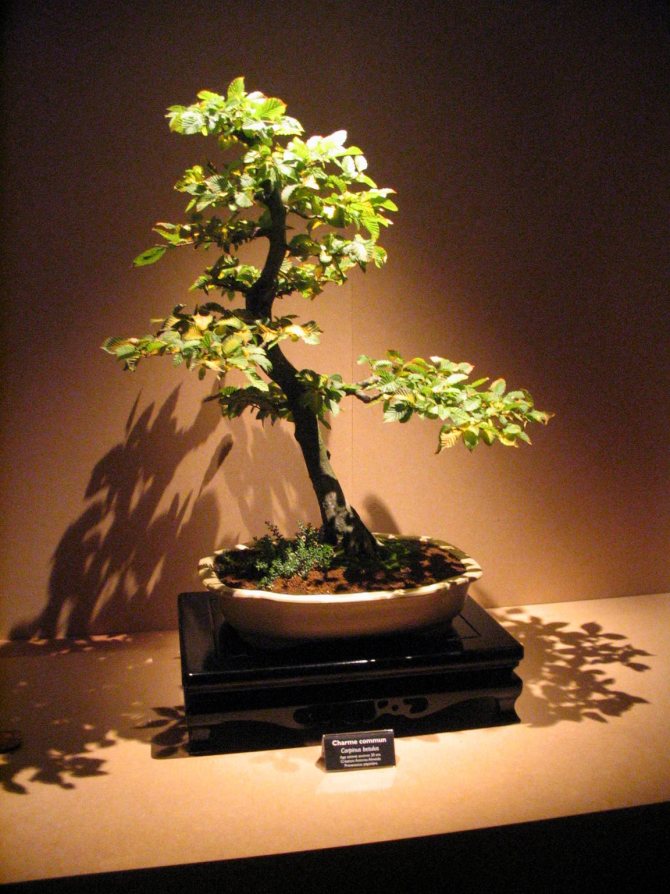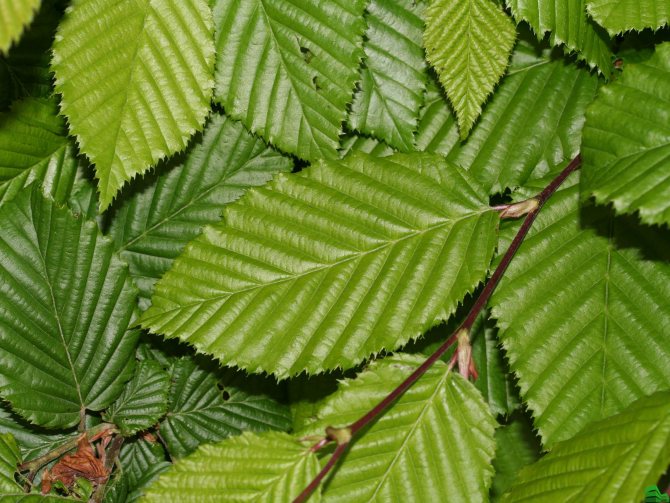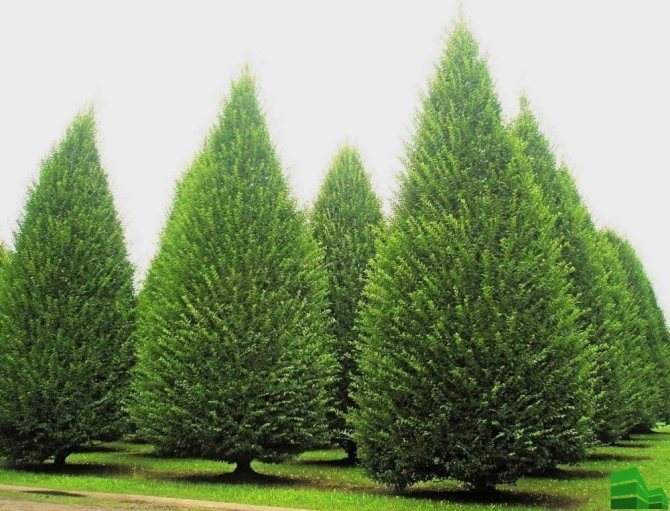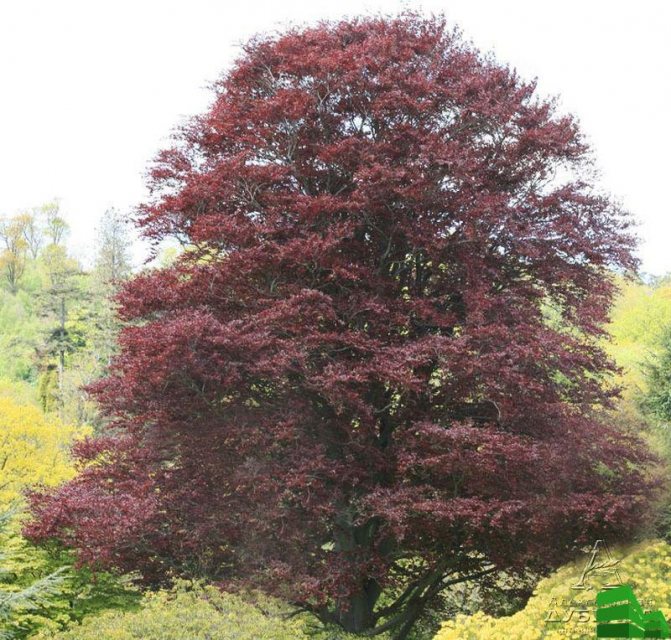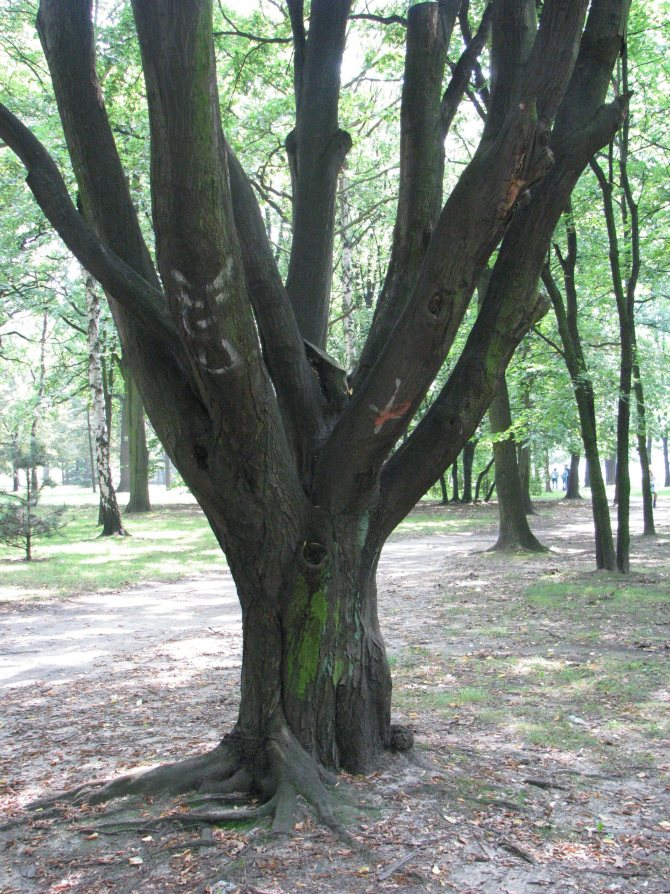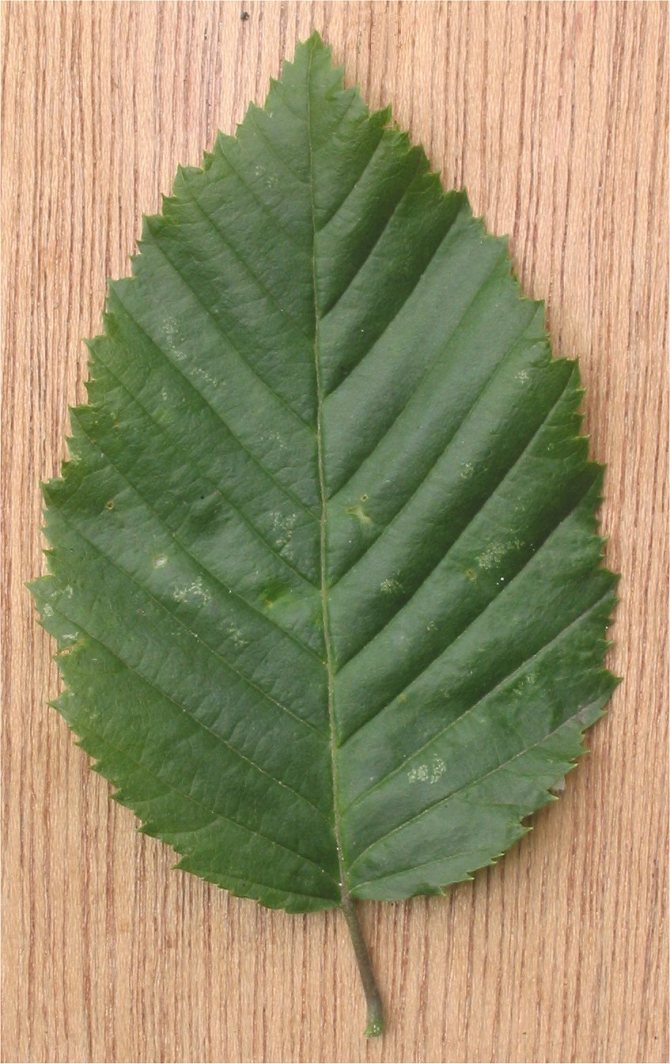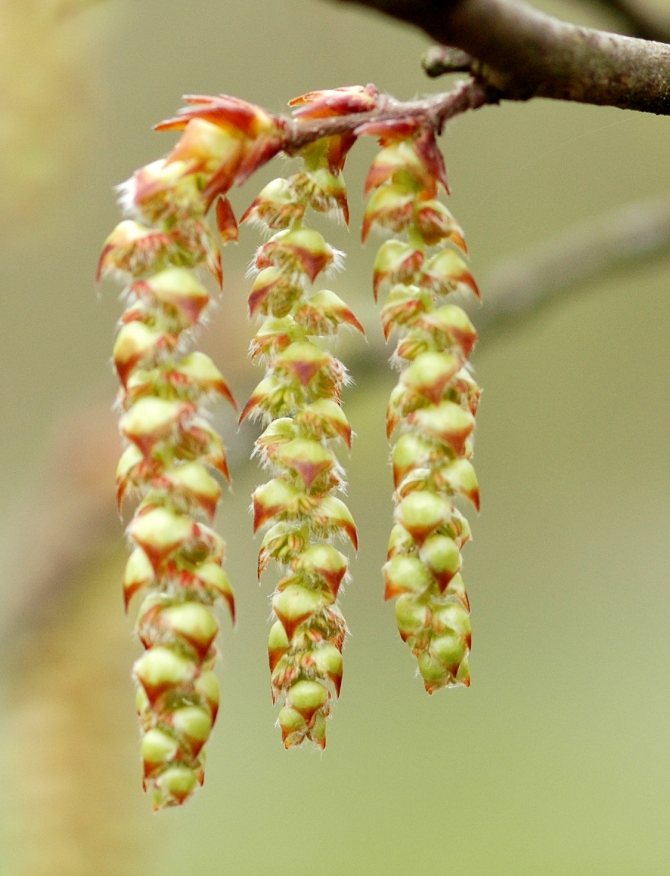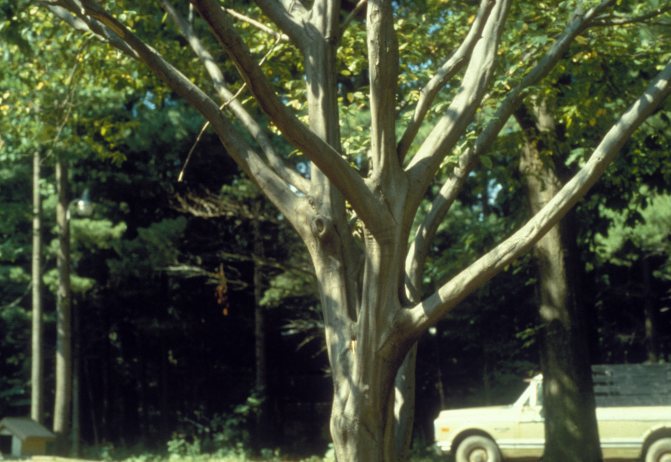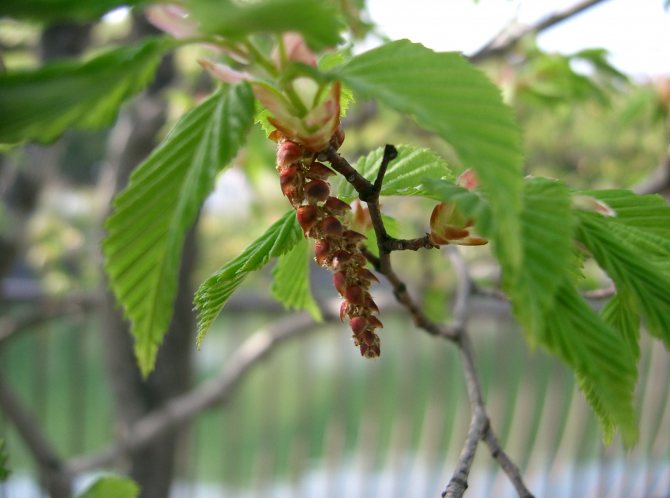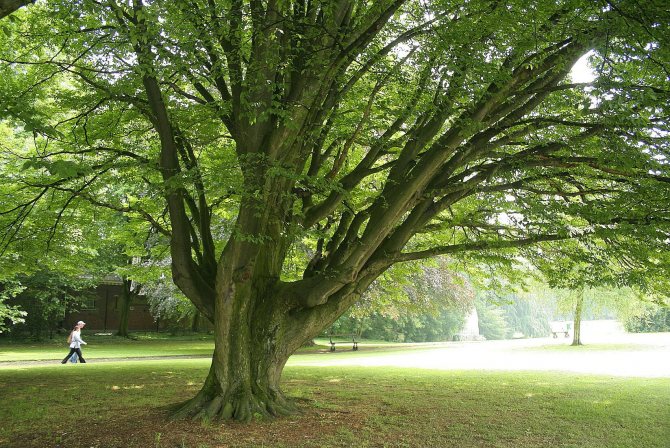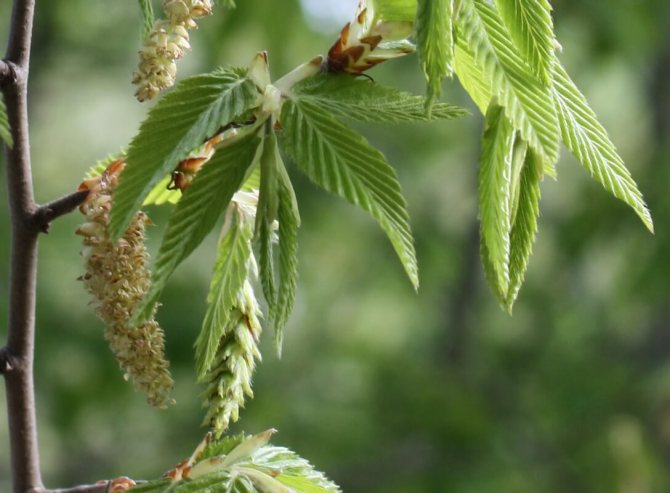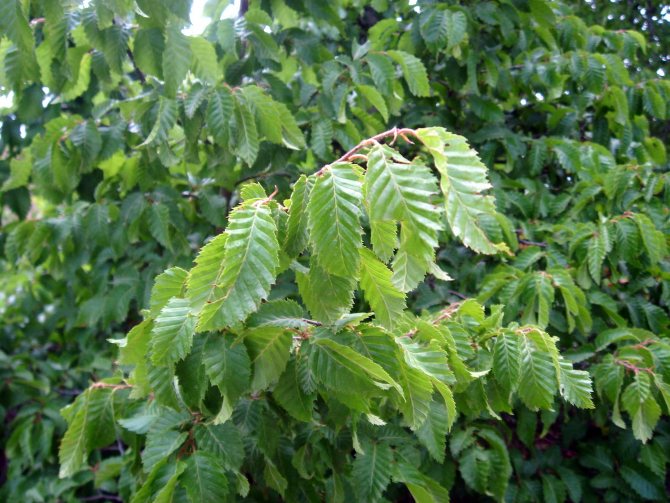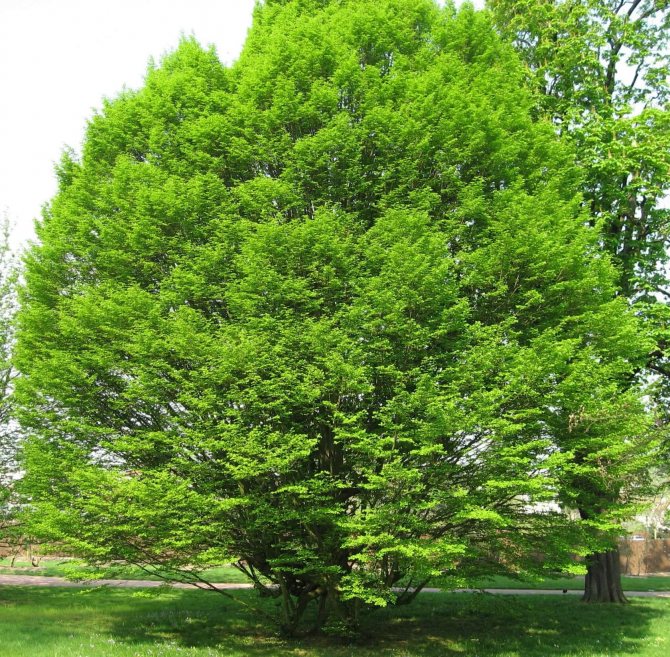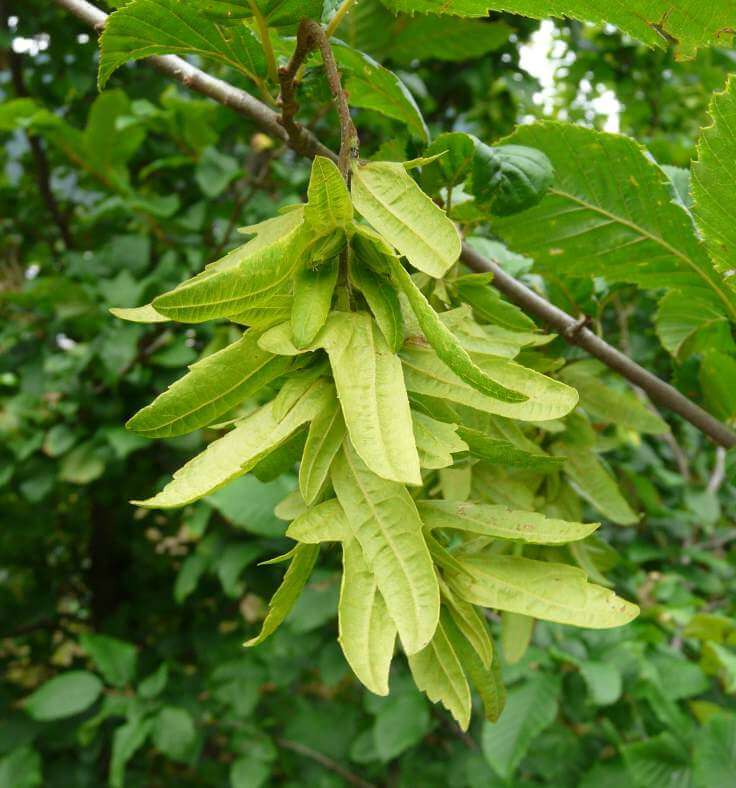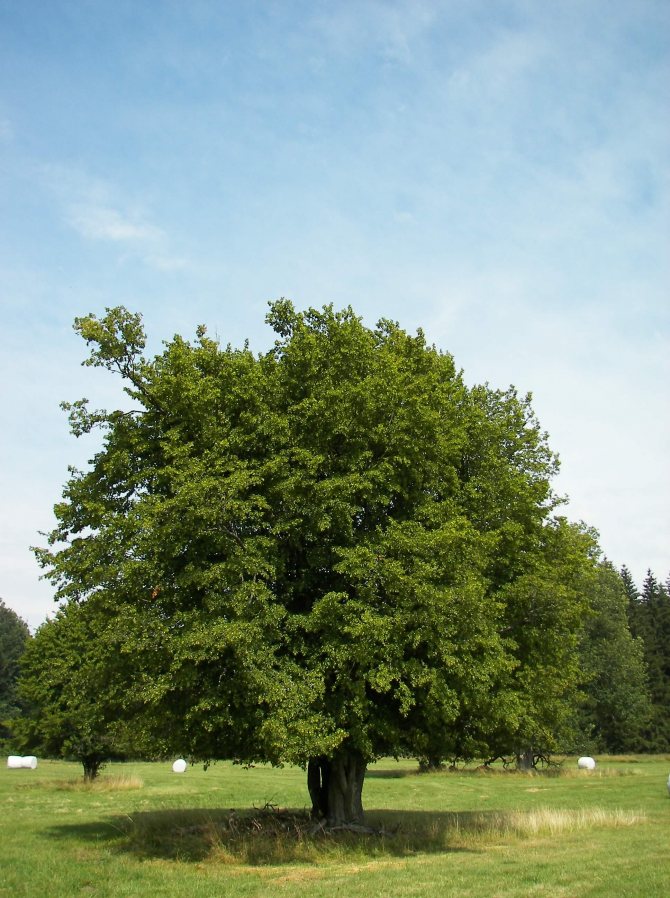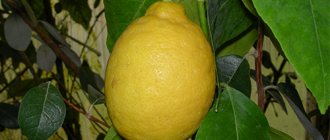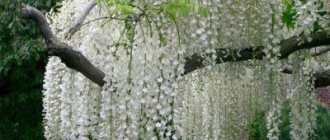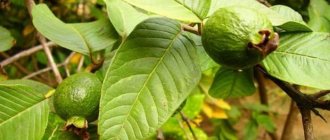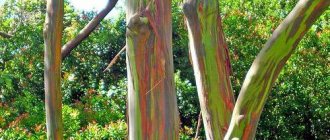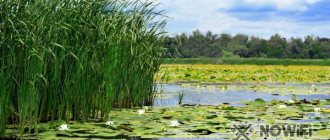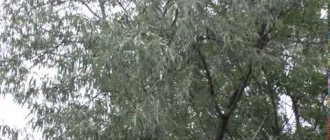| Common hornbeam | ||
| ||
| Scientific classification | ||
| intermediate ranks Domain: | Eukaryotes | |
| Kingdom: | Plants |
| The Department: | Flowering [1] |
| Class: | Dicotyledons [2] |
| Order: | Beech flowers |
| Family: | Birch |
| Subfamily: | Hazel |
| Genus: | Hornbeam |
| View: | Common hornbeam |
- Carpinus carpinizza Kil.
- Carpinus caucasica Grossh. - Caucasian hornbeam
- Carpinus compressus Gilib. nom. inval.
- Carpinus intermedia Wierzb.
- Carpinus nervata Dulac
- Carpinus quercifolia Desf. ex Steud.
- Carpinus sepium Lam.
- Carpinus ulmifolia St.-Lag.
- Carpinus ulmifolia Salisb. nom. illeg.
- Carpinus ulmoides Gray
- Carpinus vulgaris Mill.
| NCBI | 12990 |
| EOL | 1148643 |
| GRIN | t: 9196 |
| IPNI | 295248-1 |
| TPL | kew-34291 |
Common hornbeam
, or
European
, or
Caucasian
(lat.
Cárpinus bétulus
) Is a species of deciduous trees from the Hornbeam genus (
Carpinus
) of the Birch family (
Betulaceae
).
Type species of the genus [3].
Description of the hornbeam tree
A small deciduous tree, reaching 5 to 30 m in height and 4 to 8 m in width. The crown is dense, spreading, openwork, wide-cylindrical.
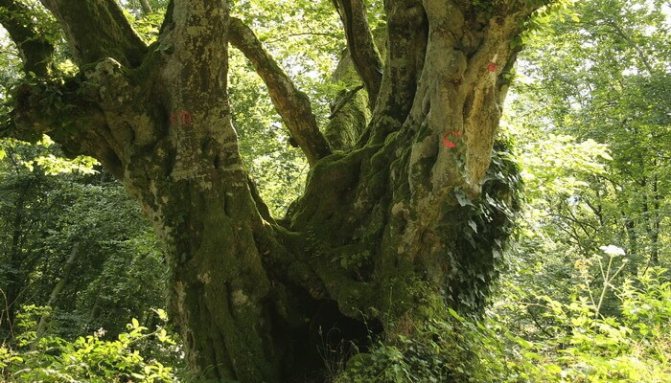

The bark is smooth, light gray. The trunk is longitudinally ribbed, fractured.
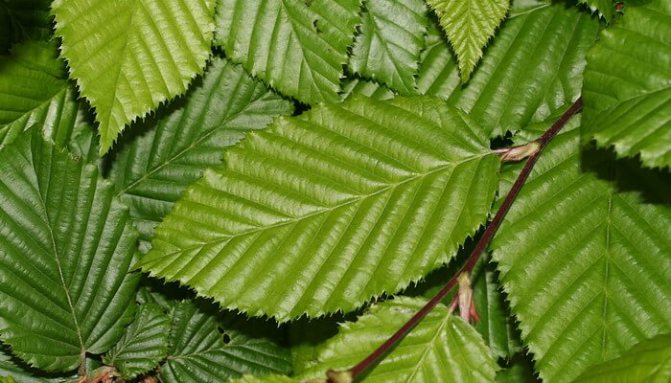

Leaves are alternate, dark green, toothed, pubescent below, 5 to 15 cm long. In autumn they turn yellow and dark purple.


Flowers - male and female earrings. Young shoots are pubescent, then glabrous. The tree grows slowly. Flowering begins simultaneously with the opening of the leaves.
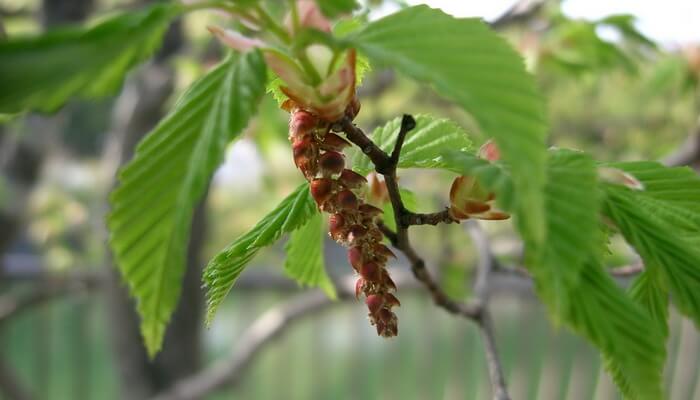

The fruit is a shiny, small, brown nut. Begins to bear fruit from 15-20 years. The root system is superficial, branched. Hornbeam tree is shade-tolerant. Wind resistant.
Conditions for growing hornbeam
Grows in a well-lit area or partial shade. Prefers moist, fertilized soil, slightly acidic, with a lime content. Does not tolerate compaction and salinization. It is drought-resistant, but in a particularly hot period, abundant watering of the plant is recommended. Transforms urban conditions. Frost resistant.
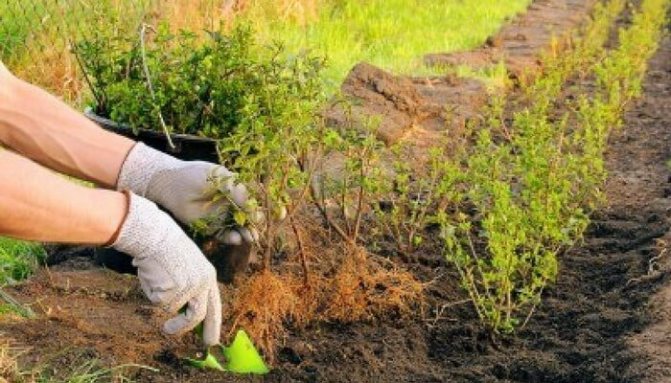

The hornbeam tree, the photo of which is presented above, does not require careful maintenance. But you should monitor the condition of the soil during planting and its moisture content. The crown of the tree is easy to cut and shape.
Propagated mainly by seeds, sometimes by cuttings and layering. Seeds are stratified before planting. Stratification takes place in two stages. At the first stage at a temperature of 20 degrees, 15-60 days, at the second stage at a temperature of 1-10 degrees, 90-120 days. Seeds are sown in the fall, immediately after harvest. At the first sprouts, the seeds are germinated at a temperature of 20 degrees or sown immediately. Store in a tightly closed container, paper or plastic bags in a dry place. The shelf life of seeds is 2-3 years. Cuttings take root pretty quickly. The tree is resistant to pests and diseases.
Combination of hornbeam with other trees. In its natural environment, it grows together with oak and beech. In plantings, it gets along with jasmine, juniper, fluffy oak.
Spread
In the wild, the heart-leaved hornbeam grows in China, in the north-east of the country, as well as in Japan, on the Korean Peninsula. A tree of this species also grows on the territory of Russia, but only in the Primorsky Territory, in the southern regions of the region. In this area, trees are found at a height of no more than 450-500 m.
Under natural conditions, it grows in black fir forests, as well as cedar-deciduous forests on the second tier. Hornbeam grows slowly. The tree loves shaded areas and tolerates the absence of bright sun comfortably. But the disadvantage is non-immunity.
Will grow favorably on alluvial soil, as well as in fertile, moist soil.But this kind of hornbeam is sometimes observed on stony, dry ground. The tree grows for 55-60 years.
After that, core rot begins, the top dries up. The plant dies off quickly. Sometimes the hornbeam affects the sapwood bark beetle.
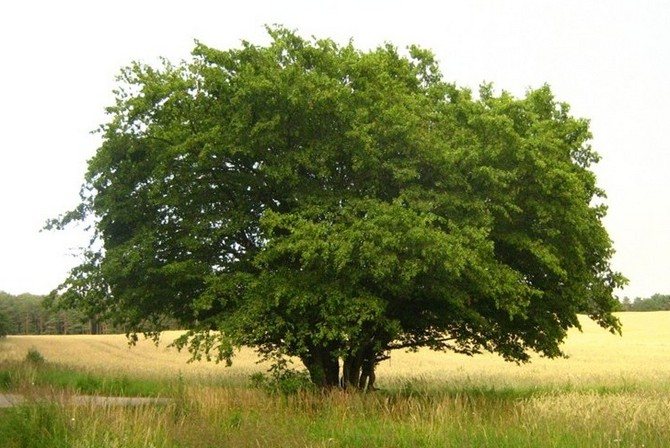

Application
This type of tree has been cultivated since 1879. Its leaves are graceful, large. Thanks to this, the hornbeam looks beautiful in plantings. The plant is planted in parks or gardens, either singly or in a group. It is a good soil protection species that is successfully used in the second tier of forest belts planted to protect the field.
The wood of the hornbeam is dense and hard, white. It is not subject to abrasion. Therefore, the material is often used for crafts, in turning production. Sometimes oil is squeezed out of the fruit, which is suitable for human consumption.
About another species: Eastern hornbeam, read by following the link.
Hornbeam application
Since ancient times, the hornbeam has established itself as an indispensable tree in economic activities. In ancient Chersonesos, braziers were filled with coal from this tree. The hornbeam was also appreciated in foundry, blacksmithing and jewelry crafts. Hornbeam trees give a smokeless flame, this unique property of the plant has made it possible to use it in pottery workshops and bakeries. They made combs from it, handles for axes and knives.
Today hornbeam wood is used for the manufacture of piano keys, billiard cues, cutting boards, rakes, shovels, musical instruments, flooring, parquet, various types of machines and other items. Hornbeam furniture is renowned for its strength and durability.
However, the wood of this plant is rather “capricious”, susceptible to moisture, and is difficult to handle with cutting tools and polish. Easy to stain and stain. It is prone to rotting without special treatment.
The leaves and shoots of the tree are used for livestock feed. The bark is used for tanning hides. An essential oil is obtained from the leaves and bark, which is used in modern cosmetology. The oil obtained from hornbeam nuts is edible.
The decorative shape of the crown allows you to use it in group and single plantings, to create hedges, parks, squares and alleys. Due to the slow growth of the hornbeam, its crown does not lose its artificially created shape for a long time. Ideal for making bonsai. Small trees decorate residential and office spaces.
The leaves, flowers and bark of the tree have found application in medicine.
7sotok.by
Hornbeam is a deciduous tree that reaches a height of more than 20 m and spreads branches for 4 or more meters. The hornbeam is used to make musical instruments, piano keys, and billiard cues. Thanks to its durable and durable wood, furniture is made from hornbeam. But, perhaps, the hornbeam is most often used to decorate alleys, squares, gardens and parks.


Landing.
It is better to plant hornbeam in sunny places where the soil is well moisturized, loose and contains nutrients. Before planting seedlings, you need to prepare the place. To do this, a pit is pulled out, 50x50 in size, so that the roots of the hornbeam will fully fit into the pit. It is important to remove all weeds. A bucket of water is poured into the bottom of the pit, and left in this position for several days. This is necessary so that the soil settles a little and is moistened. Next, dry leaves and a little fertilizer can be put at the bottom of the pit. All this is mixed with the ground, the soil should be loose and soft.
Next, the hornbeam seedling is placed in a hole and covered with earth. In order for the roots of the plant to take root faster, it is necessary to water the hornbeam abundantly. To retain moisture, a young seedling should be well covered with grass or tops. After a few days, the soil should be watered. If there are several young seedlings, then they need space, so there should be a distance of at least 30 cm between them.Hornbeam is quite unpretentious when planting and quickly takes root in new places. Therefore, with proper planting, the hornbeam begins to grow in a couple of weeks, and this can be determined by the kidneys. If the seedling has filled the buds and green leaves began to appear, the planting was successful.


Care.
Requirements for conditions (time, place and soil).
The most suitable time for planting a hornbeam is autumn. Hornbeam is a rather unpretentious plant, but it should be planted a month before the onset of frost, so that the young roots have time to settle down in a new place. You can also plant young hornbeam seedlings in the spring. But here it is important not to miss the moment and plant the hornbeam before the first buds and leaves bloom, otherwise the tree can take root for a long time, get sick and die. It is possible to plant the hornbeam throughout the summer, but when planting on hot and dry days, the hornbeam needs abundant watering. The time for planting a hornbeam can be any, the main thing is to properly care for a young plant during its first years.
It is very easy to choose a place for planting a hornbeam, because a hornbeam grows easily in all areas. The hornbeam will do well in both light shade and large shade from taller trees. Hornbeam will thrive well in sunny places, it is not afraid of dry and hot weather. However, it is worth remembering that some varieties of hornbeam are very spreading, so you should not plant hornbeam near other ornamental plants. Large and massive hornbeam branches can simply drown out their neighbors.
Hornbeam prefers well-moist, loose soils, where there are various nutrients. Hornbeam is tolerant of all types of soil, it will successfully take root even on depleted soils where there are few nutrients. But, without exception, the hornbeam varieties categorically do not tolerate swampy or watery soils. Also hornbeam will not grow on saline soils.
Pruning.
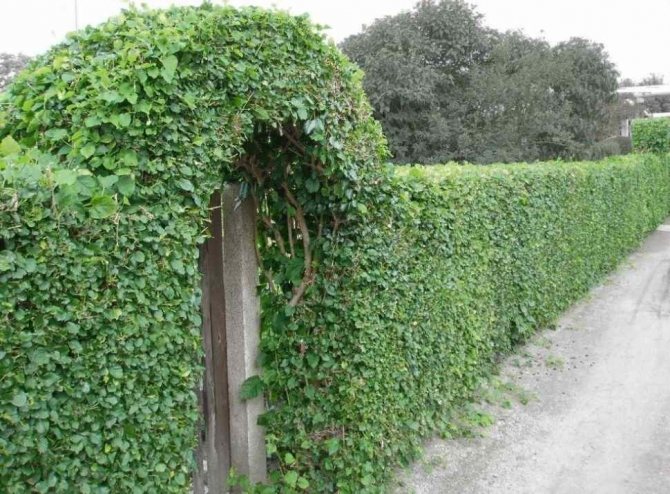

Hornbeam pruning deserves special attention. Indeed, thanks to its slow growth and easy pruning, the hornbeam is loved by gardeners. Hornbeam is specially planted in parks or gardens in order to make various shapes and patterns from its dense foliage.
But if the hornbeam grows in an ordinary garden plot, then it is pruned in the simplest way. In the spring, it is necessary to cut out frozen, broken branches from the hornbeam in order to allow young shoots to grow. Excessive shoots are also pruned, which take away the strength of the plant for growth. You also need to thin out the hornbeam from time to time, removing unnecessary branches.
Diseases and pests.
Despite the fact that the hornbeam is quite resistant to various diseases and rarely dies due to pests, nevertheless, there are a number of diseases and insects from which the hornbeam can suffer.
Heart rot.
This disease can be recognized by the black spots on the tree trunk. If the disease is not prevented in time, blackness spreads throughout the trunk and the tree dies. To prevent this from happening, it is better to choose sunny places when planting a hornbeam.
Dry completion and dying off of the upper branches.
This happens in hornbeam trees that are over 60 years old. Having reached a certain age at the top of the tree, you can see dry branches, without foliage. It is better to delete such branches if possible, since they not only spoil the appearance of the hornbeam, but also take away the strength from the tree for its further growth.
Smoke and acid rain.
Without exception, all plants and trees are damaged by acid rain or smoke. The hornbeam was no exception. Hornbeam leaves become lighter and dull. The foliage is sluggish, spots appear on them, and they begin to fall off rapidly.
Silkworm butterflies and caterpillars.
Among insects, the hornbeam is sensitive to silkworm butterflies and caterpillars. These pests eat up the leaves of the tree, feeding on their sap. The foliage curls up into tubes, the dead leaves fall off. Also, butterflies and caterpillars damage hornbeam fruits, young shoots and leaves. They do not disregard the bark of the tree, laying their larvae in it.
Reproduction.
Seeds.
Reproduction of hornbeam seeds is the most troublesome, but also the most successful way. Hornbeam seeds are harvested in autumn. Store them in a cool place, wrapped in paper or cloth. A month before planting, the seeds must be warmed up at room temperature. For better germination, the seeds are placed in water for a couple of days so that they absorb moisture. Then the seeds are planted in containers with loose soil. Hornbeam seed germination is high, therefore, with proper planting, sprouts begin to appear in a few weeks. After the sprouts have grown stronger, they can be planted in a permanent place. You can also plant seeds directly into the ground. In winter, the seeds must be covered with foil so that they do not freeze. When planting seeds in spring, warm soil is needed.
Cuttings.
For propagation of hornbeam by cuttings, it is necessary to choose strong shoots and cut off cuttings 15-20 cm long from them. Cuttings are usually cut in winter, wrapped in cloth and stored at low temperatures. A couple of months before planting cuttings in open ground, they must be warmed up at room temperature. To protect the cuttings from diseases, they must be placed in a weak solution of potassium permanganate for a day, such a procedure will help the cuttings to survive the planting steadily. Next, the cuttings are soaked in plain water for a couple of days. Cuttings are planted first in containers or cut bottles. The soil should be soft and moist. Cuttings are placed in the ground, watered. After a couple of weeks, they will begin to release roots, the first leaves will begin to hatch. After more than 3-4 leaves have formed on the handle, they are ready for transplanting into open ground.
Layers.
Hornbeam propagation by layering is a rather uncommon and difficult way. To propagate the hornbeam with the help of layering, it is necessary to dig a small trench next to the mother bush, and the layering will be placed in it. But in order for the hornbeam to take root exactly by this method, it is necessary to moisten the trench well, add fertilizers and minerals. Layers take root better from young shoots that bend over and pin down. In order for the layers to give roots faster and turn into independent plants, a small strip is cut along the shoot with a sharp knife. It is from this cut that the roots will form. Further, the shoot is covered with earth and watered with water. If the planting was carried out correctly, then after a few weeks the shoot will give roots and at the end of autumn it can be separated from the mother bush.
Varieties
Common hornbeam.


Common hornbeam is used to create a dense hedge, its foliage forms an impassable fence. The common hornbeam is a tall and spreading tree, whose height is rarely below 15 meters, with a smooth crown and a powerful trunk. Leaves are oval with pointed ends, dark green above, light green below. During the period of color, the hornbeam throws out earrings up to 15 cm long. The common hornbeam is valued for its ability to grow in the shade, withstand the most severe frosts, almost does not need additional care, and is resistant to diseases and diseases. The common hornbeam grows very slowly, due to this property it lends itself well to decorative pruning and keeps its shape for a long time.
Caroline hornbeam.
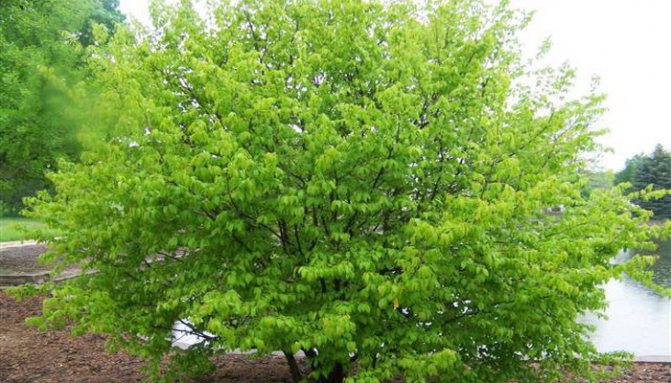

An adult tree reaches a height of more than 10 m, mainly grows on the banks of rivers or swamps. This type of hornbeam grows in the form of a spreading, lush bush, the branches of which can reach several meters in length. The foliage of the Caroline variety is light green, the crown is light brown, smooth. During the summer, foliage colors vary from light green to lemon and purple tones. Favorably tolerates cold, can grow in the shade, but requires careful watering for the entire warm period. Caroline hornbeam is able to do without feeding, does not require careful care.
Hornbeam Caucasian.


This hornbeam variety reaches a height of over 30 m, its branches reach several meters in length with a smooth and brown crown. The Caucasian hornbeam reacts poorly to cold weather, young shoots often die from frost. The Caucasian hornbeam grows well in the shade, but loves sun and moderate watering. The shape of the leaves of the Caucasian hornbeam resembles an oval, juicy green in color with pointed edges. The dense foliage of the Caucasian hornbeam lends itself well to decorative pruning and retains its shape for a long time.
Eastern hornbeam.


This hornbeam variety is rarely found in Russian gardens, because his homeland is the Caucasus. But, nevertheless, this variety has successfully taken root in our country. The eastern hornbeam reaches a height of no more than 10 m, more like a shrub, thanks to its branches with dense foliage. The eastern hornbeam grows very slowly, and the life period of the tree itself rarely exceeds 10 years. On the eastern hornbeam, dense foliage forms, ovoid with pointed ends. The leaves are bright green, by autumn the color changes from yellow to burgundy shades. The crown of the tree is smooth, brown in shape, the eastern hornbeam forms many shoots, thanks to which the eastern hornbeam resembles a dense bush in shape. Easily lends itself to decorative cutting, retains the shape given to it for a long time. The eastern hornbeam tree is unpretentious, grows well in the shade, does not require a lot of sun and self-care, loves watering, and is extremely afraid of harsh winters.
Heart-leaved hornbeam.
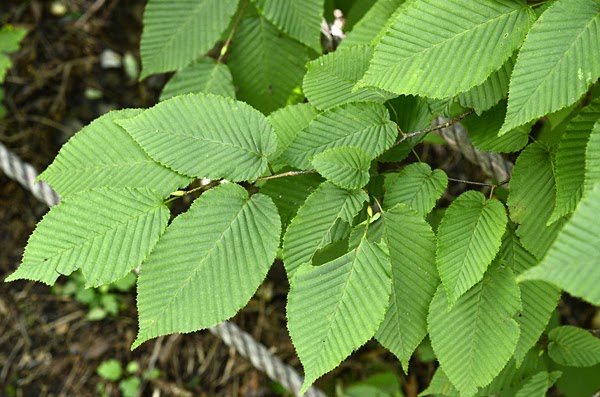

The height of the cordial hornbeam is rarely below 15 m. The crown of the tree is low-growing, spreading, dense foliage is formed. The hornbeam bark is gray, rapidly growing with young shoots. The shape of the leaves of the hornbeam is ovoid, the ends of the leaves are pointed, and small corners are formed along the edges of the leaves. The length of the leaf is usually up to 12 cm, in spring and summer it is bright green; closer to autumn, the shades of the foliage change to reddish and red. The heart-shaped hornbeam blooms very interestingly, forming elongated earrings up to 8 cm long, more like hop cones. Like other varieties, the hearty variety is unpretentious. It perfectly tolerates shady places, thanks to its spreading root system, it sustainably tolerates strong winds and frosts. It is not afraid of frost and does not require special care. Also, due to its slow growth, it will hold its decorative form for a long time. Its thin branches are easy to cut.
Hornbeam Turchaninov.
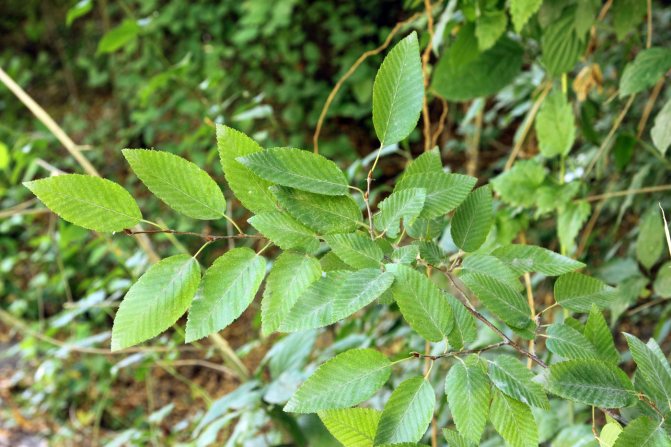

The tree is small in size, more like a bush no more than 6 m high. This variety forms many branches with dense foliage. The crown of the tree is brown, young shoots are green. Young foliage of light green tones, oval in shape with slight pointed edges along the edges, 4-5 cm long. This variety of hornbeam prefers to grow in the sun, but will easily take root in shady areas. Hornbeam growth is also slow, does not need special care. It survives frost and bad weather well.
Hornbeam tree properties
Hornbeam leaves contain a large amount of tannins, aldehydes, gallic and caffeic acids, coumarins, bioflavonoids. The leaves and bark are rich in essential oils and ascorbic acid. The seeds contain vegetable fats.
Infusions and decoctions of hornbeam flowers are used to treat brain tumors and circulatory disorders. Its shoots are part of the medicinal collection, which is used for infertility and complications during pregnancy. Leaf infusions are effective in treating diarrhea.
The juice contained in the hornbeam shoots contains a large amount of sugar and organic acids.
Esotericists attribute magical properties to the gram and their ability to influence people's thoughts, dispel speculation and really look at the world. Wood energizes and prompts to perform actions, deeds.
Pests and diseases
The good news is that uninvited guests in the form of insects infect only sick and weakened plants. And then, you can only meet leaf or bark beetles.
Most often, the hornbeam tree is affected by cancerous growths, various rot that settle on the shoots. There is also the appearance of spots on the foliage. In case of detection of fungal diseases, the plant is treated with herbicides. If the crown is affected by spotting, then the entire plant is treated with a solution of copper sulfate. The fallen leaves are collected and then burned.
As for the cancer of the trunk, which is formed when a tree is damaged by a marsupial fungus with the further formation of a cancerous ulcer, in this case the plant cannot be saved. It is cut down and burned.
Hornbeam tree: varieties
There are several varieties of this plant.
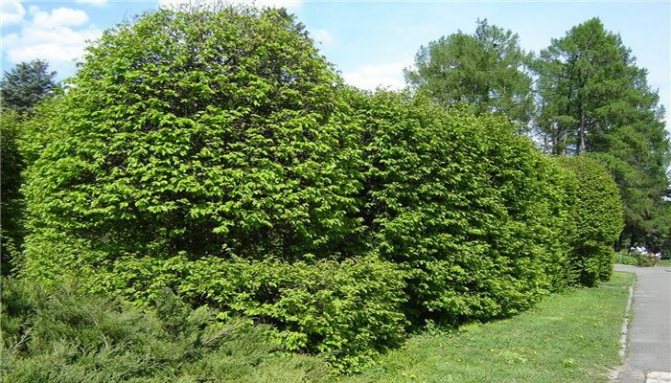

Hornbeam "ordinary" has the second name "European". Grows up to 20 m in height and 8 m in spread. The crown is openwork, ovoid. Grows in partial shade and in lighted places. It blooms in spring during the opening of the leaves.


The “heart-leaved” hornbeam has transparent foliage.
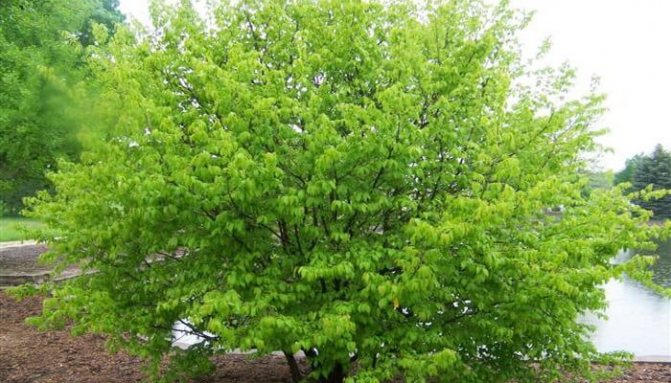

Hornbeam "Caroline" is a thermophilic plant. Not winter-hardy, but shade-tolerant. It grows along the rivers of North America.
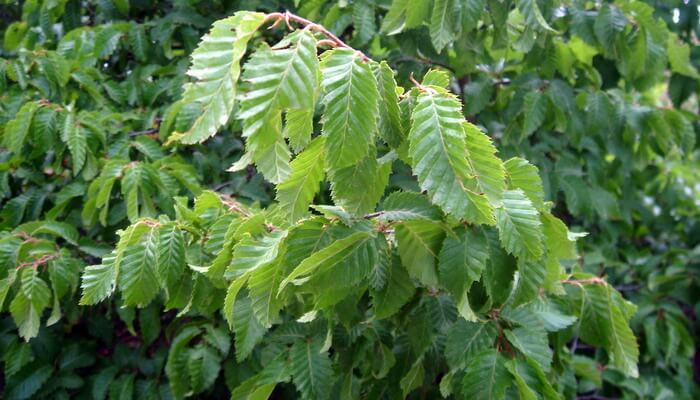

Hornbeam "oriental" grows in the mountains. Has a curved trunk. Retains rocky, rocky embankments and conserves moisture in the soil.
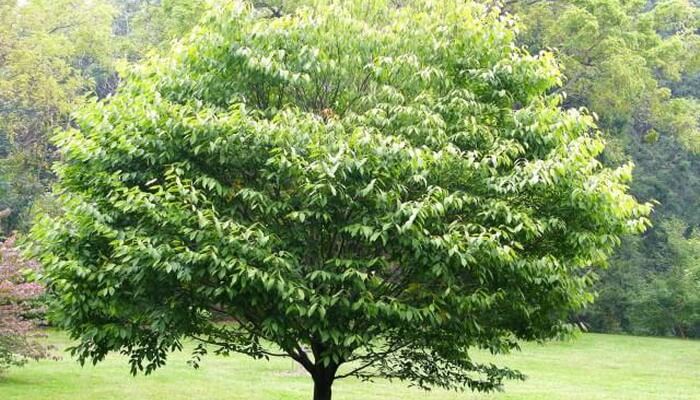

Hornbeam crowns also differ in their shape. They are pyramidal, weeping, columnar, oak-leaved and variegated.
You can see what a hornbeam tree looks like on the page in the photo gallery below.
Taxonomy
View Common hornbeam
belongs to the genus Hornbeam (
Carpinus
) of the subfamily Leshchinovye (
Coryloideae
) of the Birch family (
Betulaceae
) of the order Bucous (
Fagales
).
Some botanists attribute it to a separate family Hazel (Corylaceae
) together with hazel (
Corylus
) and hop grabber (
Ostrya
).
| 7 more families (according to the APG II System) | 3 more kinds | |||||||||||||||
| order Beech flowers | subfamily Hazel | view Common hornbeam | ||||||||||||||
| the Department Flowering, or Angiosperms | family Birch | genus Hornbeam | ||||||||||||||
| 44 more orders of flowering plants (according to the APG II System) | one more subfamily, Birch (according to APG II System) | 40 more species | ||||||||||||||
|
|
|
| |||||||
| Left to right: Bottom of a mature tree. Sheet. Male inflorescence. Seed. Decorative form. | ||||||||||
Photo gallery
Mountain ash Pendula (Sorbus aucuparia Рendula)
Weeping mountain ash (S. aucuparia Рendula) is a small tree, the height of which depends on the stem and varies in the range from 2 to 6 m. It has a rather original crown - drooping shoots, but not flexible, but rather bizarrely curved. This branch architecture increases the decorative value of the tree in winter.
But in general, Pendula's mountain ash is beautiful all year round: in spring, white flowers, collected in large shields, come to the fore, in summer - large carved leaves, in autumn - orange clusters of berries.
The plant loves the sun, but tolerates a little shading. The soil prefers fertile, loose, moderately moist. This is important, since mountain ash does not tolerate drought and waterlogging. He also does not like alkaline soil, from which it may even die. But it tolerates the cold well and rarely freezes even in severe windy winters.
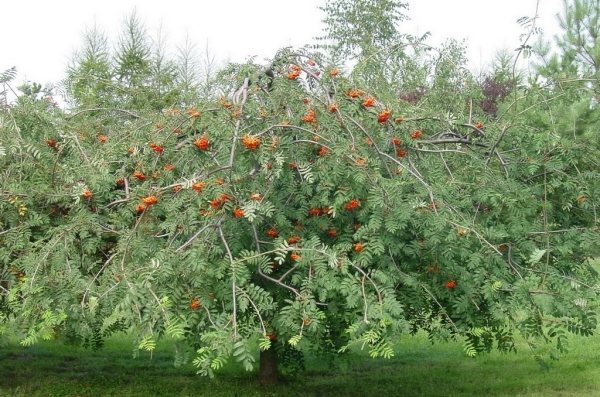

Weeping mountain ash is a great lawn tapeworm
Where does it grow?
Places of growth is almost the entire continental part of Europe, here the plant abounds in park zones, woodlands. The hornbeam tree is widespread in Asia, Iran, Transcaucasia, the Baltic States and countries such as Belarus and Ukraine.
It prefers to settle in deciduous forests, here it is found in the form of pure plantations. In the Caucasus mountains, hornbeam grows at an altitude of 2000 meters and even higher.


What hornbeam seedlings to take for planting?
For planting hornbeam plants, you should not take too large plants, although the shrub is well bushy, it grows relatively slowly.
Therefore, it is best to pick up a hornbeam with a height of 60-100 cm. Plants should be planted very tightly, every 20-25 cm in a row.
If hornbeam seedlings have bare roots, not covered with an earthen clod, then all the time, before planting, they need to be dug in and kept in the shade in moist soil.
Too large a root system should be cut down to 15-20 cm, leaving tiny and thin roots, which are the most valuable because they are the first to take water from the ground. The seedlings should be planted at the depth at which they grew in the nursery or slightly deeper to the level of the root collar.It is very important to shed the soil well around the bushes, after planting, and tamp the soil itself.
You can also buy hornbeam seedlings in containers for planting. It is simpler and more reliable, although such seedlings are more expensive. But they do not need to be planted immediately after purchase; such seedlings can be stored even for several weeks.
When planting hornbeam from containers, it is necessary to cut the container so that the entire root is covered with soil. You can just gently remove the root and soil from the container without cutting it. Too large and long roots are additionally cut off, thanks to which the bush will take root better and new roots will develop faster.
Pruning
Plants are ideal for shearing and are often used to create medium to tall hedges typical of French gardens and magnificent topiary art figures.
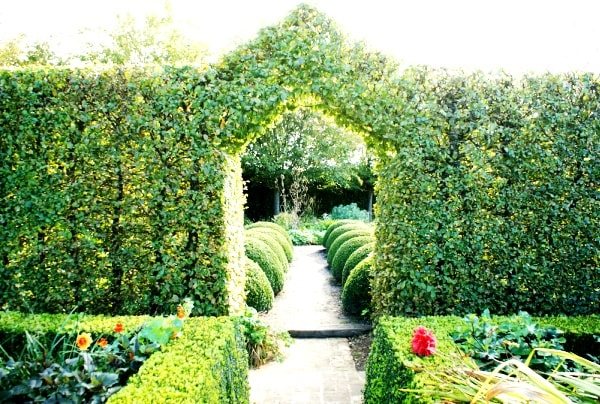

Hornbeam hedge
Along with its unpretentiousness, this is another advantage of the hornbeam, so it is not surprising that the tree is so popular with gardeners.
In order for the hornbeam hedge to be dense, it is necessary to plant the plants in one line at a distance of 50 cm from each other. In this case, the height of the seedlings should be about 80 cm. Planting is carried out from mid-October to mid-November or at the end of March.
Timing and frequency of cutting plants
Trees for hedges or topiary figures must be trimmed 1-2 times: in the summer at the end of June and at the end of February - early March. In later spring periods, the procedure is not carried out, since the haircut causes an abundant flow of juice from the cuts.


Seed propagation
Seeds are sown before winter in pots in a wet mixture of turf and perlite. Cover with compost on top. Young plants are best germinated in partial shade outdoors. Saplings appear in the spring and at the end of summer they can be transplanted to a lighter place in the open ground.
Shoots that have formed in the area of the root collar of the tree have a high rooting ability.
Wood quality and its use
High quality wood is obtained from the hornbeam. When properly processed and dried, it has excellent aesthetic and mechanical properties.
In many respects, the properties of the hornbeam determine the curliness of its structure. It causes low bending, tensile, and compressive strength of wood, but high when splitting. In addition, the irregular wavy arrangement of the fibers creates an unusual pattern, giving the structure an attractive appearance.
The hornbeam requires virtually no maintenance.
A feature of the rock is its high density and, accordingly, hardness. Wood is very difficult to process, cutting, splitting, but the products obtained from it have high strength, wear resistance and durability.
The hornbeam cut has a beautiful color close to white, which is why it is used to create mosaic compositions. At the same time, wood lends itself well to processing with paints and varnishes, it is often used to imitate valuable species, for example, ebony.
Due to its high strength and impact resistance, bats, billiard cues, golf clubs, handles for tools are made from hornbeam. It is excellent for floor coverings treated with paint or varnish. It is used to make some elements of musical instruments, such as keys for grand pianos.
The tree perfectly holds nails and screws, is firmly connected with thorns, which is very appreciated in the manufacture of furniture. The hornbeam set is obtained not only of high quality, but also of a rather attractive look due to the original structure of the breed. But it should be noted that due to the difficult mechanical processing, wood is not used for mass production of furniture. As a rule, single copies are made from it.
It should be noted that the hornbeam is not intended for the production of glued blocks.In addition, wood has a low biostability and absorbs moisture well, therefore it requires special processing when used in environmental conditions. For this reason, hornbeam is practically not used in construction.
Landing
The optimal time for planting is the end of September, October. Approximately 1 month before the onset of frost. If planted in spring, it is important to be in time before bud break. The place is chosen in the shade or partial shade. When planting in a row in a trench, keep a distance of at least 30-40 cm. The planting hole should be 50-60 cm deep. Pour 1 bucket of water. After 2 days, start planting:
- Rotted compost is placed on the bottom.
- Lay a drainage layer.
- Sprinkle the seedling with soil mixture.
- The soil is compacted.
- The trunk circle is mulched with hay or covered with stones.
- Provide sufficient watering for speedy rooting.
After 3-4 days, water again.
Young seedlings are wrapped to protect them from frost before wintering. The base of the trunk is wrapped in burlap. They monitor the near-trunk circle, remove weeds. The first pruning is started after 2 seasons.
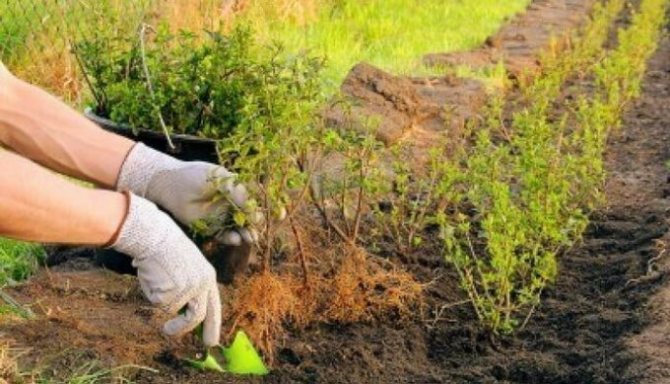

Popular garden species and varieties
Of the dozens of species, the European hornbeam or the common hornbeam (Carpinus betulus) is the most common in horticulture, due to the compact crown of varietal forms and the ability to easily tolerate a curly haircut of any complexity.
How to grow garden brugmansia
The eastern hornbeam (Carpinus orientalis), also called the black hornbeam, is a slow-growing, densely branched shrub or small tree with golden fall foliage.
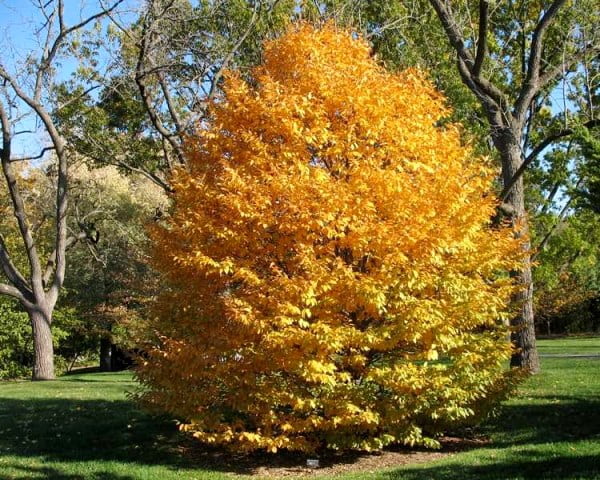

Carpinus orientalis
European hornbeam varieties
Fastigiata is a medium-sized tree with a pyramidal crown. Autumn leaves are yellow and orange. The variety is especially suitable for the formation of hedges and topiary figures.
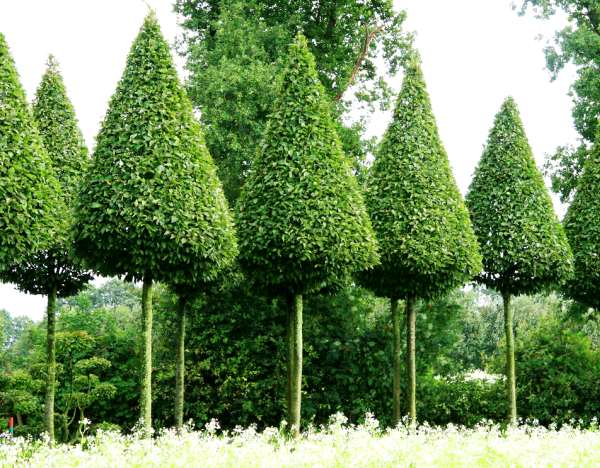

Variety "Fastigiata"
Pendula, a bonsai with weeping, umbrella-shaped shoots, creates a delightful garden accent. This variety is very easy to cultivate.
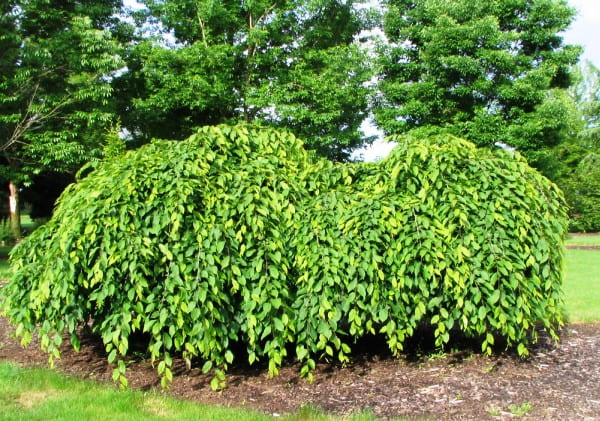

"Pendula"
Columnaris Nana is a dwarf, compact varietal form with dark green foliage that turns golden yellow in autumn. Works well as a low hedge that requires little pruning or as a topiary plant.
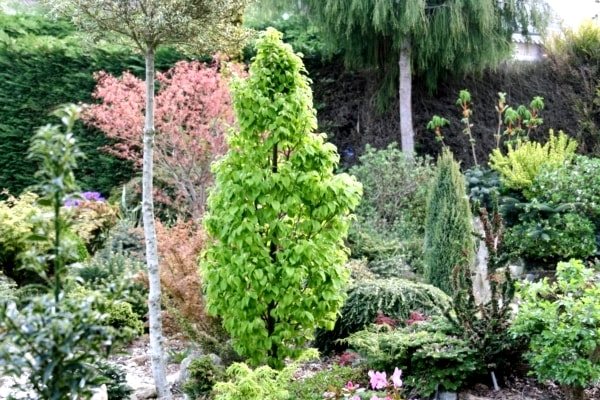

Columnaris Nana
Top dressing
During the first years, the condition of the trees is monitored and fertilization is carried out. Top dressing raises immunity, stimulates growth. Hornbeam needs nitrogen, phosphorus, potassium. In smaller quantities, it may require manganese, molybdenum, copper.
Under young hornbeams up to 5 years old, 7-8 kg of rotted compost are introduced by digging. Close up to a depth of 14-16 cm. In addition to organic matter, minerals are used. To do this, dilute in 10 liters of water:
- 2 tbsp. l. superphosphate.
- 1 tbsp. l. potassium sulfate.
For 1 adult tree, 2-3 buckets of diluted top dressing are used.
The use of a plant in landscape design
This plant is actively used in the design of urban areas and household plots. It is a kind of bright decorative element. But the scope of the tree does not end there.
Today, the plant is actively used to decorate summer cottages and garden plots, because the garden area becomes more attractive under the influence of these amazing representatives of birches. The plant tolerates pruning well, so it is allowed to plant it both separately and together with other plantings. Hornbeams are used by landscape designers to decorate:
- alleys;
- hedges;
- city squares and parks.
Many people love it because it grows very slowly, so the plant does not need frequent haircuts. Dwarf hornbeam varieties, which can be grown in a room or office, are in special demand. This tree will definitely appeal to plant lovers.
Coarse Elm Camperdownii (Ulmus glabra Camperdownii)
The rough Camperdownie elm from the elm family is one of the most beautiful trees with a rounded umbrella crown. Very often, its diameter exceeds the height of the trunk, making the tree look like a mushroom or an inverted bowl. If the shoots are not shortened, then it forms a dense canopy, resembling a hut.
The leaves of the weeping elm are large, dark green, rough to the touch. Shoots are long, grow horizontally at first, and then droop. To get a thicker and wider crown, the branches need to be trimmed periodically. The tree blooms with small purple inflorescences before the leaves bloom, in the place of which tufts of lionfish are formed.
One of the advantages of Camperdowney is its high ductility. The tree can grow in any climate, since it tolerates cold and heat, drought and high humidity, sun and partial shade equally well. Except that he does not like the swamp, preferring dry places.
Elm prefers structured, fertile, well-moistened soil. During the active growing season, it needs mineral fertilizing, during the dry period - in watering.
The Camperdowney elm makes excellent tapeworms. And if you put it on the playground and let it turn into a thick tent, there will be no limit to the delight of the kids.
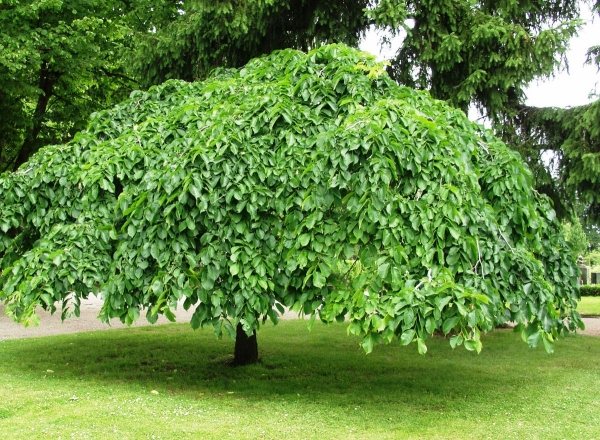

Thanks to the unusual umbrella crown, the Camperdowney elm is beautiful and recognizable at any time of the year.
How does the plant reproduce?
Reproduction occurs in several ways:
- Cuttings
- Seeds
- Layers
Cuttings
A stalk for propagation is selected from strong healthy shoots, cut off from them by 15-18 cm. It is usually prepared in late autumn, wrapped in cloth and stored until spring at a low temperature. 30-50 days before planting in the soil, they are transferred to room temperature, treated with a solution of potassium permanganate for diseases (soaked for a day), and why they are put in clean water for 2-3 days. Cuttings are initially planted in prepared containers with fertilized soil, carefully watered. And only after the appearance of the first 4-5 leaves, they are transplanted to a permanent place.
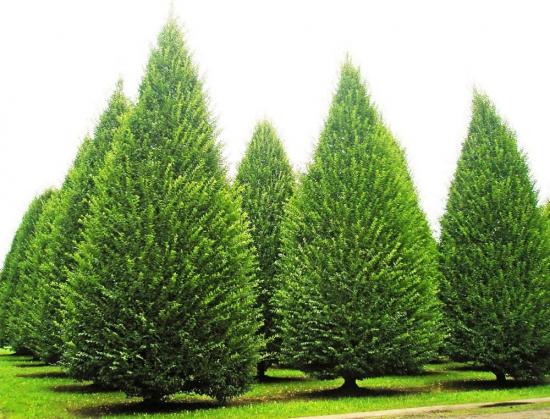

Seed propagation
The best, but labor-intensive, method is seed propagation. They are harvested at the end of September, stored in fabric bags or cardboard boxes at low temperatures. 30-40 days before disembarkation, they are warmed at 20-25 degrees. Seed stratification is often carried out. For higher germination rates, nuts are soaked in warm water, and then planted in prepared containers. The first shoots appear after 2-3 weeks, after the appearance of real 3-4 leaves on them, you can plant the shoots on the site.
Reproduction by layering
An unpopular way among gardeners. In it, when planting the mother tree, a trench is made next to it for layering. This small moat is fertilized and moistened. It is best to press young shoots, they are tilted and sprinkled with earth. For quick rooting, an incision is made along the selected layer with a knife. Future roots will emerge from this incision. If the method was performed correctly, after 3 weeks shoots will appear and you can separate it.
Shaggy plum Pendula Rubra (Prunus subhirtella Pendula Rubra)
If you want a weeping tree that blooms beautifully in spring, the Shaggy Pendula Rubra Plum is an excellent choice. The plant belongs to the elm family and is a standard tree 2–4 m high with a drooping crown up to 5 m in diameter.
P. subhirtella Pendula Rubra is very popular in Japan, and if you have a Japanese-style corner in your garden, the tree will come in handy there. In April - May, the plant is covered with an abundant pale pink color, which looks even more dazzling thanks to the cascading branches.
A miniature weeping tree loves sunny places and well-moistened nutritious loamy and sandy loamy soils. In arid regions, the plant needs watering, although it has a negative attitude towards waterlogging.Plum Pendula Rubra is considered winter-hardy, but so that the flower buds do not freeze, plant it in secluded places protected from the wind.
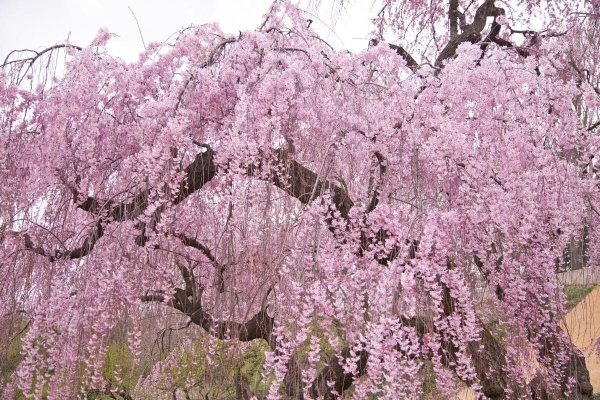

Plum Pendula Rubra is one of the most spectacular flowering trees for the spring landscape
Other trees, including conifers, have weeping crowns, but we will talk about this another time. We will be glad if our selection will help you replenish your collection of garden plants with new acquisitions and make your garden even more beautiful.
The need for landscape
Hornbeam is irreplaceable in landscape design. The cultivation of trees is simple, the set of activities is standard. It tolerates unpleasant weather conditions and frosts. It is valued for its lush dense crown, high-strength wood and a lot of healing properties.
Now read:
- All the benefits of mulching soil for high yields
- The main technologies for growing peas and caring for them
- Choosing cucumbers for open ground according to your preferences
- Description of 12 types of late varieties of cabbage for planting
About
Leading Researcher of the Laboratory of Vegetable and Berry Crops, Yakutsk Research Institute of Agriculture, Siberian Branch of the Russian Academy of Agricultural Sciences, Republic of Sakha (Yakutia).
Interesting Facts
Hornbeam is a tree that attracts a person with its beauty, who has the opportunity to observe all the changes in the process of its growth. Here are some facts from the life of a tree:
- Hornbeam nuts are brown in color and have a shiny surface. One kilogram of fruit contains 30-35 thousand nuts.
- People endowed the hornbeam with miraculous properties. So, esotericists believe that the tree affects thoughts, encourages a person to do the right things and actions. To recharge yourself with energy and be awake for a long time, it is enough to lean against the trunk.
- A tree planted in your garden helps to organize your thoughts and focus on the main things in life. It is believed that then everything will turn out as it should.
- If you constantly wear accessories made of hornbeam wood, the nervous system calms down, a person is not exposed to stress and depression. Snow-white products are especially popular, it is believed that their owner is noble and pure.
However, it should be borne in mind that the influence of healing and magical properties on each person is not the same. This is due to the nature of the people, the goals set and the ways to achieve them. In each case, the hornbeam has a different effect, according to the adherents of wood magic.
Hornbeam hedge maintenance
After planting a hornbeam hedge, care, first of all, consists in proper watering, fertilization and timely pruning of the bushes.
Watering the hornbeam planting should be carried out immediately after the first planting and all subsequent times when the topsoil dries out to a depth of 5 cm.
Watering and fertilizing is necessary in the optimal amount, given that each plant in such a dense planting competes with each other for water, nutrients and light.
Remember that watering should be infrequent, but longer and more abundant. This gives much better results than regular irrigation. As a result, the water reaches the deeper layers of the soil and moisturizes the deepest layers of the soil with the roots.
A good solution is to use drip irrigation. Once you create a professional irrigation system, you will appreciate the success of this event over time.
But at the same time, instead of a complex irrigation system, you can lay a hose between the plants, with holes made in it every 30-40 cm.
Such a design will cope with watering functions as well as a professional system.
Worth knowing! Watering the hornbeam hedge should be watered once a week for several hours with a low but steady flow of water. This provides the best guarantee for optimal plant hydration.
With regard to fertilization for hornbeam, you should not fertilize the bushes immediately after planting, as too high a concentration of mineral salts will negatively affect the rooting of the seedlings.
If the hornbeam was planted in the fall, then the next fertilization is carried out in the spring and only after we notice the growth of the plant.
Spring planting should be fertilized with small doses of fertilizer 2 months after planting. The dosage, in this case, is chosen two to three times lower than the recommended dose.
Every next spring, you can already apply mineral fertilizers at a full dosage. For top dressing, it is best to use complex fertilizers, for example, Nitroamofosk.
This preparation contains the main macronutrients necessary for the full growth and development of plants. Top dressing with complex fertilizers is repeated every 3-4 weeks from April to August.
Long-lasting multicomponent fertilizers such as Basacote Plus are also good. It is a complex granular fertilizer with controlled release of nutrients with a shelf life of three, six, nine or 12 months.
Fertilizers "Bazakot" are essential substances for active plant growth. The advantage of using such fertilizers is that no additional fertilizing is required per season. It is enough to apply such fertilizer once a year, in the spring.
It is packaged in packages of 15 or 25 kg and is suitable for use on many crops, including decorative ones. This granular fertilizer is based on the principle of precise placement of nutrients under the polymer shell.
The membrane of each capsule is elastic, due to which its properties are preserved during the entire working period. Such a casing is resistant to mechanical stress on the soil or to changes in temperature conditions, withstanding up to -20 ° C.
Read about how to plant a lawn with us.
The shiny cotoneaster is not difficult to plant. Follow simple rules and guidelines.


